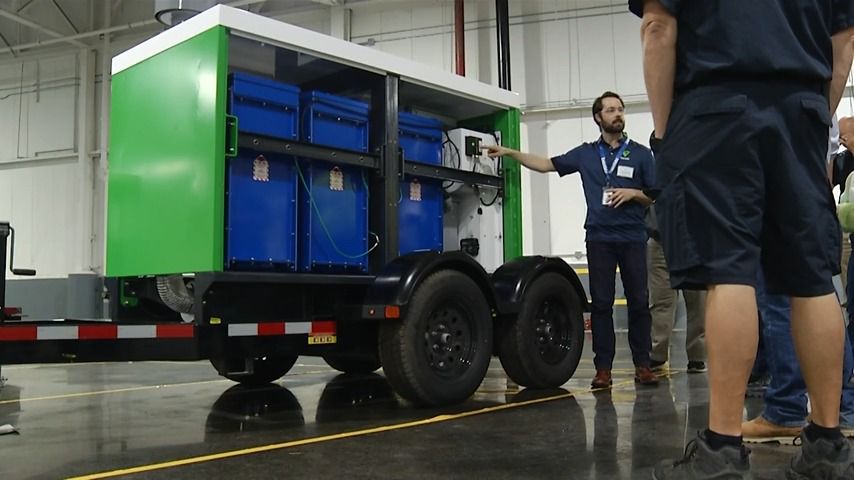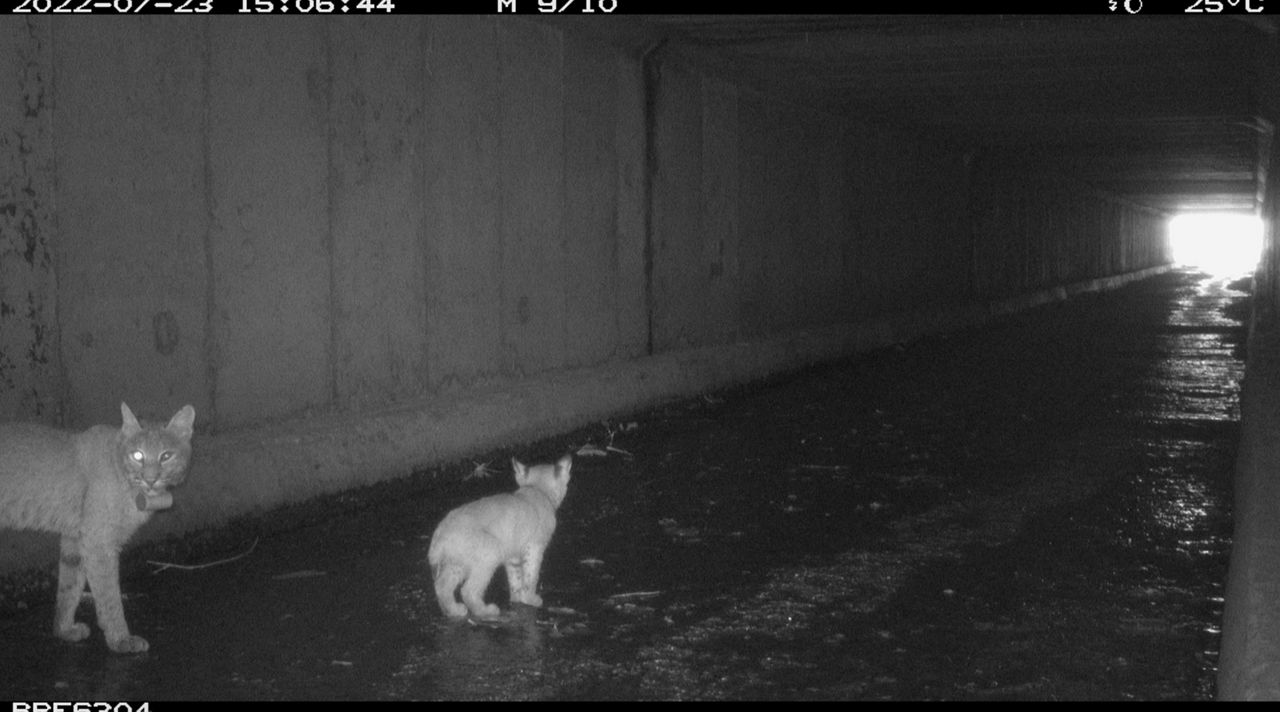By the end of this year, a state mandate requires all passenger cars, SUVs and pickup truck sales to be 35% electric. By 2030, that number climbs to 68%. It reaches 100% by 2035. The batteries in those vehicles are lithium-ion.
Car fires are rare. According to the Thruway Authority, between 2022 and 2024, a total of 26,372 crashes occurred on the Thruway system. Fewer than 2%, or 421 of those crashes, involved fires. We don’t know if any of those involved electric vehicles.
EV fires are statistically even rarer. But, when they do happen, it takes a lot more resources and time to handle them.
We’ve already seen the results of fires caused by smaller-scale lithium-ion batteries in garbage trucks and apartment buildings. People have lost their lives. So, are the people tasked with fighting these fires prepared? What is the state doing to keep roads and neighborhoods safe?
Training is certainly underway and legislation to further that has just been passed. However, there are some challenges — mainly money, resources and the time it takes to battle these blazes.
At Viridi, on Buffalo’s east side, firefighters are getting a firsthand look at a lithium-ion battery exploding.
“Battery technology has always been part of our energy mix, but it's never been a significant part,” said Jon M. Williams, founder and CEO of Viridi.
The demand for that technology is growing.
“The next 10 years, we will have batteries on every building,” Williams said.
The company has created fail-safe energy storage. Williams understands the inner workings of lithium-ion batteries.

“Think of your toaster when you push down the button on the toaster, and the coils glow red; that’s because they're creating resistance, and the energy can't travel," Williams said. "So when there's resistance, it releases heat in that cell. When there's a short, that short causes resistance. When the resistance creates enough heat, it sets off the lithium.”
Williams says, like dominoes, the failure moves from cell to cell. Their technology stops that from happening.
“Inside of this pack is a very specific series of materials, pouches and other designs that when that cell lets go, we hold the energy and we stop it from propagating," Williams explained.
According to state records, there are more than 75,000 EVs registered in upstate. Monroe County has the most.
The Henrietta Fire District includes 21 miles of the Thruway. Officials recently invited local fire departments to test and see a fire blanket in action.
“It's a newer technology," said Mark Cholach, chief of the Henrietta Fire District. "It's really designed to ... it came about for all the difficulties that departments are having with extinguishing electric vehicle fires.”
Cholach says this blanket buys fire departments time.
“We can deploy this blanket; it can contain the fire," Cholach said. "If we're talking a high rise or a parking garage or some type of, underground parking, the crews can get in there, they can get the vehicle isolated before they get hose lines in place.”
Once a lithium-ion battery goes up, there’s a chain reaction. They can burn for hours.
“On a regular vehicle fire where it'll normally take 500 gallons of water or something like that to put it out," Cholach said, "we're looking at upwards of 20,000 gallons for an electrical vehicle.”
He says the blankets come in multi-use or single-use, which is what they’ve chosen for safety reasons.
“I don't want to bring that cancer in those chemicals into the unknowns, back into a firehouse and expose my members," he explained.
He says firefighters haven’t deployed their blanket yet, but it’s just a matter of time.
“I can see that Monroe County has seen some of these fires, but it's not happening every day," said Ken Love, the assistant fire coordinator in charge of hazmat for the Monroe County Fire Bureau.
Love says the fire blankets range from $1,500 to $5,000. It’s a costly expense for cash-strapped departments that have been encouraged to use grant money to get equipped.
“This is a new challenge for us in Monroe County and throughout the state, and we're working with state leaders as well to try to come up with processes to protect our community and where else we can help out," Love said.
It isn’t just firefighters who need to understand EV fires. So do paramedics and police.
“In 2023 there was a national study that pointed out that a full 40% of first responders, firefighters, had no training whatsoever in how to deal with electric vehicle fires and incidents," said State Sen. James Skoufis (D - Cornwall).
It was a troubling stat for Skoufis. He’s the New York State Senate sponsor for a bill that would establish a specialized electric vehicle emergency response training program. It recently passed both houses.
“You've got batteries, you have wiring, you have computers, some of which have to be completely disconnected before tools like the Jaws of Life can be used," Skoufis said.
Skoufis says the legislation tasks the state fire administrator with creating the program for all first responders. He adds it’s a step in the right direction as our communities shift to clean energy solutions.
“There are still thousands and thousands of firefighters in particular, never mind police officers, EMS, who have to respond to some of these accidents as well — who are not fully trained, properly trained, in dealing with these incidents," said Skoufis. "And so I, you know, we are getting more ready by the day, but we're nowhere near fully ready.”
At the Tsatsawassa Fire Department in the Town of Nassau, a few dozen volunteer firefighters got their questions about lithium-ion fires answered.
“Hoping to learn how we're going to approach these fires," said volunteer firefighter Michael Hurley. "We're a very small department with many across the state of New York that have limited resources. And these fires could occur at any time, in any place.”
Hurley has been a volunteer firefighter for about two decades. For rural departments like his, using 20,000 gallons of water is a challenge.
“We have limited resources to begin with," Hurley said. "We show up with water that's on our trucks. We don't have hydrants out here, so we have to establish a water source before we can do anything.”
They’ll rely on mutual aid, like many departments do. But fire departments across the state are consolidating, struggling to find members and money. At least these classes are state-funded. Teaching 39 volunteer firefighters is Victor Graves, a fire protection specialist with the New York State Office of Fire Prevention and Control.
“I think that the biggest thing is to alleviate their fear of being able to deal with these emergencies," Graves said. "The goal of this class, again, is to make them as comfortable as they can and give them the understanding as to what to do with these emergencies.”
Graves says they’ve taught 132 classes since 2023, reaching more than 4,500 firefighters. Online, there have been 700 participants. According to the Firefighters Association of the State of New York, there are nearly 90,000 firefighters across the state.
“We're still using some of the current technology that we have to extinguish fires," Graves said. "It's just understanding the new techniques of how to apply the water and where to apply the water.”
He says it’s about putting water on the cells that haven’t failed, keeping them cool and stopping the fire from spreading. Unlike traditional fires, depriving it of oxygen doesn’t help. The battery must burn out.
Back at Viridi, a pack is made in 20 minutes. The catch, though, is this technology isn’t for cars. Williams thinks that one day something similar could be. For now, the focus will be on equipping and training first responders, as the state projects 3 million EVs on the road by 2030.
“And if we tell manufacturers that safety is a priority, they will figure it out,” Williams said.
Then there’s the question of what happens after an EV fire. The New York State Department of Environmental Conservation will be a key player in that.
The agency released the following statement:
It is currently developing additional guidance, which will focus on managing damaged, defective and recalled lithium-ion batteries. It will also include techniques for first responders.









